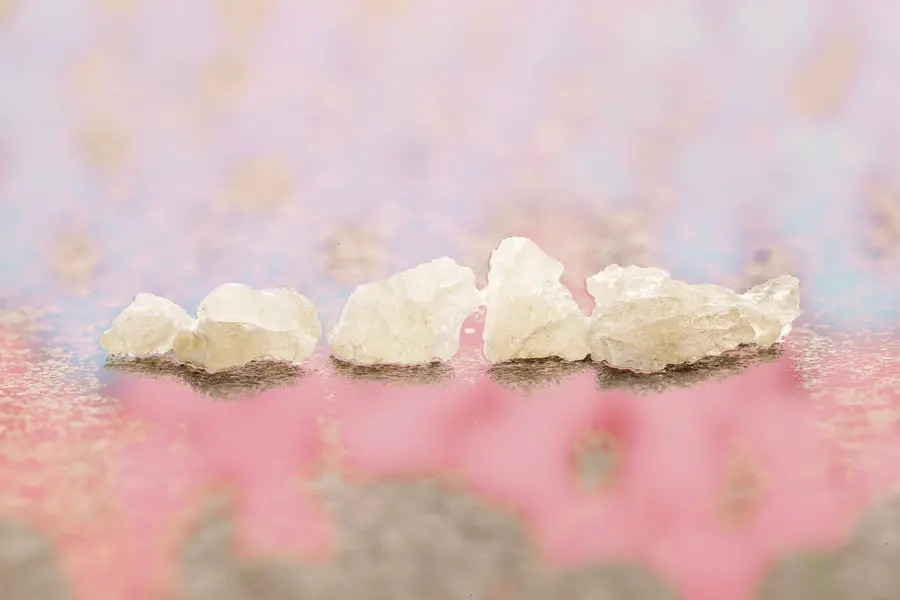Additional Editorial Review By: Matthew Aragon
If you could take a pill that would, in a matter of minutes, fill you with empathy, love, and meaning, would you take it? MDMA—often called “ecstasy,” or “molly”—is a popular club drug, famous for inspiring feelings of openness, positivity, and connection, although it also mandates some harm reduction tactics to negate or mitigate any side effects. Raves and music festivals have given the drug its party-animal reputation, but there’s far more to this controversial compound than recreation. If research continues, MDMA may be one of the first new therapies for post-traumatic stress to enter the market in over 18 years.
A Brief History of MDMA
MDMA is one of the most famous club drugs around, yet its notoriety in the party scene is relatively new. It was first synthesized by German chemists in 1912 as an experimental medicine to control bleeding. In 1914 it was patented by the pharmaceutical company Merck. But, it wasn’t until the late 1970s that scientists began publishing the first reports on the effects of MDMA in humans. They found that the MDMA can inspire intense emotional experiences, and the drug quickly became a compound of interest to psychotherapists. A small circle of professionals began experimenting with and distributing the compound.
But, MDMA’s time in the psychotherapy limelight didn’t last long. By 1985, ecstasy had found its way into the party scene, most notoriously at the Dallas nightclub Starck, and soon attracted the attention of the Drug Enforcement Agency (DEA). The same year, ecstasy earned a place on the Schedule I of the Controlled Substance list, and research on the psychoactive nearly ground to a halt. Now, almost 50 years after the start of the War on Drugs, another group of scientists and academics are pioneering a resurgence of psychedelic research—and this time MDMA is well on its way to being an approved therapeutic intervention.
What is Molly?
MDMA stands for 3,4-methylenedioxymethamphetamine, and it’s quite an unusual chemical compound. In simple terms, molly stands somewhere between a stimulant and a psychedelic. Yet, in experiential effect, MDMA is different from both classes of drugs. The compound can produce some visual effects, as one would expect from a psychedelic. But, the drug’s emotional high is also quite different from the speedy buzz often associated with other amphetamines.
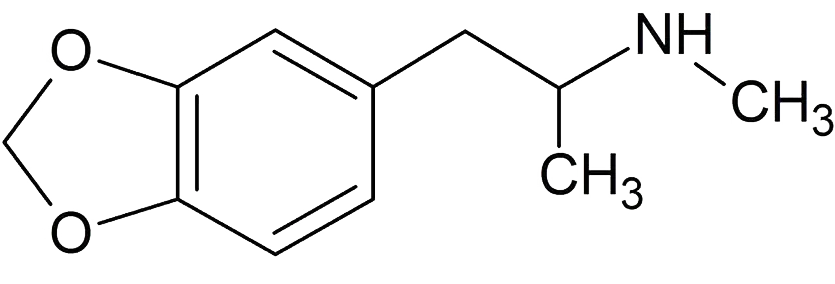
Instead, MDMA is an entactogen. Entactogens—alternatively called empathogens—are psychoactive drugs that stimulate feelings of empathy, openness, and emotional closeness. This group of substances is distinct from many psychedelic drugs like ayahuasca and LSD, which are considered entheogens. Entheogens inspire mystical or spiritual experiences.
But, there’s something important to know before procuring molly off the street. “Molly” and “ecstasy” may be slang terms for MDMA, but when exchanged illicitly, they may not actually contain any MDMA at all. In fact, a 2017 study tested 529 samples of what was believed to be MDMA and discovered that only 60 percent of the tested pills contain any MDMA at all. The study was conducted via a partnership between John Hopkins University and DanceSafe, a nonprofit that works to improve public safety and drug education among nightlife communities. Even worse, nearly a quarter of the tested samples contained adulterants that were not identifiable to the research staff.
Illicit “molly” is also very different from the pharmaceutical MDMA used in MDMA-assisted psychotherapy. In some cases, the two may be entirely different chemical compounds. They’re also used in wildly different settings—MDMA-assisted psychotherapy is an intensive treatment that combines pharmaceutical MDMA with psychotherapy in a highly controlled setting. “Molly” or “ecstasy” may actually be a drug cocktail that includes varying amounts of MDMA as one potential ingredient, as the above study suggests. In many ways, illicit ecstasy and pharmaceutical MDMA should not be lumped together.
How to Grow Shrooms Bundle
Take Both of Our Courses and Save $90!
How Does MDMA Work?
Illicit molly can contain so many adulterants that it’s difficult to know what you’re taking, let alone how it works and why—that’s also why it’s so important to use a drug testing kit like this one. There is less mystery with pure (research-grade) MDMA, however. Although, that isn’t to say that there is not a whole lot left to learn. Scientists are still studying the impacts of how MDMA works in the brain. But, the gist of our current understanding can be summarized simply: MDMA may accelerate social bonding. The drug is a social stimulant, and it affects both neurotransmitters and hormones that influence social interactions in surprising ways.
Most notably, MDMA interacts with the receptor systems for the neurotransmitters serotonin, dopamine, and norepinephrine. Serotonin is generally thought of as a “good mood” neurotransmitter, inspiring feelings of happiness and wellbeing. Both dopamine and norepinephrine are implicated in focus and attention. The latter is responsible for the fight-or-flight response, while the former is involved in both pleasure and pain.
But, the hormonal impacts of the psychoactive are perhaps even more enlightening. Research suggests that taking MDMA causes abrupt spikes in the hormones cortisol, prolactin, DHEA, oxytocin, and vasopressin. Prolactin and oxytocin are hormones produced in abundance when a mother breastfeeds a child. Oxytocin is loosely thought of as “the love hormone” and is believed to be critical for human bonding. Vasopressin is a hormone that influences attachment and monogamous bonding in males. Researchers speculate that DHEA may play a role in feelings of euphoria associated with the drug. All the while, cortisol is a stimulating hormone that is implicated in stress, along with the neurotransmitter norepinephrine.
As for MDMA as a treatment for PTSD, it may work so well because it allows patients to revisit traumatic memories from a place of removal and compassion: While PTSD increases activity in the amygdala, the part of the brain that processes fear, while decreasing activity in the prefrontal cortex, where rational thought is generated—MDMA does the opposite, decreasing activity in the amygdala and increasing activity in the prefrontal cortex, therefore helping patients experience greater feelings of trust and safety. MDMA also increases connectivity between the hippocampus and amygdala, allowing memories to be moved into long-term storage—which is particularly useful for PTSD patients, who may often experience traumatic memories as if they’re still in the present.
What Does Molly Feel Like?
As mentioned above, molly is an entactogen. The word, coined by pharmacologist David Nichols, is loosely derived from Greek and can be translated as “producing touching within.” MDMA can inspire powerful emotional experiences and potentially a strong connection with inner feelings, often without visual hallucinations. This makes the effects of MDMA quite different from other stimulants and psychedelic drugs.
Of course, every individual will respond differently to MDMA, although many report similar feelings of alertness, openness, love, connectedness, and euphoria. Yet, the festive mood that molly inspires is far from its only effect. MDMA can also cause:
- Heightened sensory perceptions
- Excitability
- Jaw clenching or other muscle tension
- Insomnia, inability, or disinterest in sleep
- Talkativeness
- Arousal
Although, these are certainly far from the only effects of MDMA.
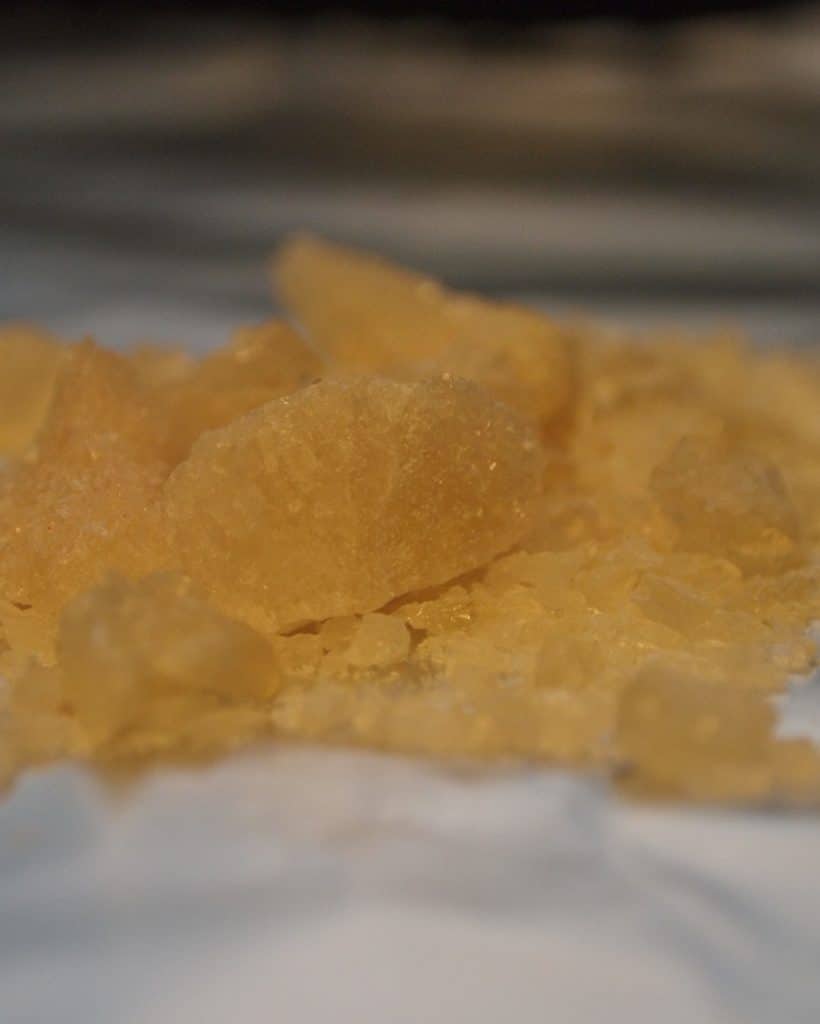
How Long Does Molly Last?
The active effects of MDMA usually last between three to five hours, with a peak after approximately one to 1.5 hours. Yet, while the overall experience is shorter than most psychedelics, the aftereffects of molly can continue for the next week. Depression, anxiety, mood instability, and fatigue are all common, reportedly for up to one week after taking recreational molly. Although, these side effects may worsen when molly is mixed with other substances. In short, molly may give you an emotional hangover of sorts. To combat this, many people take 5-Hydroxy-Tryptophan (5-HTP), which is a direct precursor to serotonin in the brain and which clinical studies have shown to relieve the symptoms of depression. However, if you do wish to take 5-HTP, do so only after rolling, as taking it beforehand could be fatal due to serotonin syndrome (a condition we discuss later in this story).
How Much is a Dose of MDMA?
When purchased illicitly, MDMA theoretically comes in pressed pills, powder, or crystals, with the average dose being about 85 and 125 milligrams. But, the drug’s illegal status makes it very difficult for consumers to know the exact dosage of MDMA they’re taking. MDMA purchased illicitly is rarely ever pure. Instead, it is often misrepresented as MDMA (while actually being another substance like methylone or methamphetamine), or otherwise often cut with other substances, unwittingly or not. For the average person, there’s no telling what these impurities might be without a drug testing kit.
MDMA-Assisted Psychotherapy
It’s been 35 years since the DEA first announced an emergency Schedule I controlled substance classification for MDMA. Yet, dedicated scientists and academics continue to pioneer developments in MDMA research and therapeutic application.
One such pioneer is Dr. Sue Sisley, an MD and psychiatrist who has spent the last 25 years helping patients recover from trauma and manage mental health. Most recently, Sisley’s work with medical cannabis drew mainstream attention. In 2019, Sisley spearheaded a lawsuit against the DEA for providing sub-par cannabis to use in studies on posttraumatic stress. And now she’s adding a new therapy to her toolkit—MDMA.
MDMA may be one of the first new therapies for post-traumatic stress to enter the market in over 18 years.
In the world of psychedelics, it’s raves, arrests, and adulterated substances with unpredictable risks that often make prime-time news. But, buried underneath the hype lies an ocean of unexplored potential—an ocean that Dr. Sisley has only just begun to traverse. This year, she began her first training in MDMA-assisted psychotherapy.
The training is offered through MAPS Public Benefit Corporation, a wholly-owned subsidiary of the Multidisciplinary Association for Psychedelic Studies (MAPS), which sponsors research on the potential of MDMA-assisted psychotherapy in treating post-traumatic stress disorder. MAPS also has a rare advantage; their research has advanced to Phase 3 clinical trials, the last stage before approval of a new treatment is considered by the Food and Drug Administration (FDA). Approval for trials of Schedule I controlled substances is often difficult to come by. But, in this case, the struggle for bureaucratic legitimacy has been well-rewarded. Thus far, MAPS’ preliminary findings were so strong that the treatment was granted a Breakthrough Therapy designation.
What is MDMA Therapy?
MDMA-assisted psychotherapy is a form of experimental psychotherapy. A trained professional administers pharmaceutical-grade MDMA to a patient in a therapy setting, guiding the patient by asking questions about what they are experiencing and helping the patient ask questions of themselves. The psychoactive compound acts as a conduit which, Sisley’s words, allows “the patient’s inner healer to take hold.”
Generally speaking, Sisley explains, “MDMA catalyzes some patients to go deeper than they ever could in traditional cognitive behavioral therapy. Some patients may describe this as getting 20 years of standard talk therapy within four months. […] Studies suggest it allows [patients] to explore traumas deeply, in a safe, trusted environment created within the standard therapeutic process.”
But, MDMA-assisted therapy is no walk in the park or a silver bullet. Patients approved to receive MDMA-assisted psychotherapy engage in over 40 hours of active therapy time. They work with a MAPS-trained therapist weeks before their first MDMA session. Over the course of three months, patients receive MDMA three different times. They’ll spend each eight-hour MDMA session with a licensed therapist and another trained clinician and many more hours debriefing in the days and weeks afterward.
Thus far, MAPS’ findings suggest that this therapeutic approach can be effective for patients battling the impact of trauma—a common mental health condition that the conventional pharmaceutical industry has not focused on for the past two decades.
MDMA and PTSD
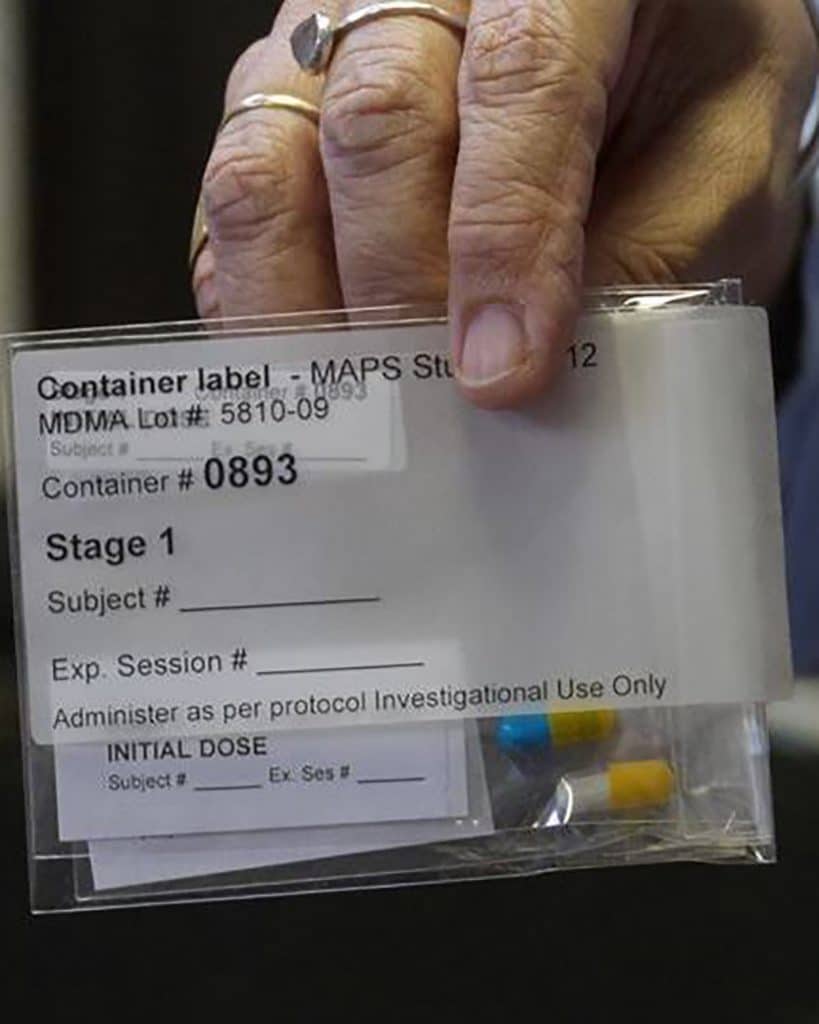
Posttraumatic stress disorder (PTSD) is a wide-spread and sometimes debilitating condition that can have profound impacts on a person’s quality of life. Nightmares, anxiety, depression, chronic sleep deprivation, flashbacks, agitation, and hypervigilance are all symptoms experienced by people surviving a traumatic event. In 2017, the FDA granted breakthrough therapy status to MDMA-assisted psychotherapy. “Breakthrough status” is granted only when there is enough evidence that a drug appears so potentially effective and important that it deserves expedited treatment.
How to Grow Shrooms Bundle
Take Both of Our Courses and Save $90!
Read: MDMA For Racial Trauma
The therapy was granted breakthrough status after Phase 2 clinical trials from MAPS found that MDMA-assisted psychotherapy was not only substantially more effective than the pre-existing treatments for PTSD but may cause a total remission of PTSD in some patients. Over half of all study participants no longer met the diagnostic screening criteria for PTSD after just two sessions of MDMA-assisted psychotherapy.
“[The treatment] offers a rare opportunity for folks who haven’t been helped with other treatments to actually achieve an improvement in symptom severity,” says Sisley. Although, she is quick to add that not everyone will experience these impressive results. “But you know,” she continues, “the notion that more than half of the patients went into remission, even years later, they still had no detectable PTSD symptoms, is truly extraordinary for physicians who really examine this.”
Part of the success of these MDMA trials comes from the unique therapy approach designed by the MAPS team—a non-directional approach that creates space for the patient to explore their inner voice. But, the other part of the success may come from the effects of the drug itself. As mentioned above, MDMA impacts both hormones and neurotransmitters that inspire positive mood and cultivate feelings of love, altruism, and connectedness. According to MAPS, the compound seems to reduce fear and defensiveness and increases trust and empathy.
These unique properties of MDMA seem to be “extremely beneficial to the therapy setting,” explains Sisley. “It sort of catalyzes this therapeutic vibration in the session that really allows some [patients] to explore things without fear. Suddenly, the trauma that resurfaces is no longer as terrifying. They can actually confront [the trauma] in therapy through being enveloped with safe people around them who are non-judgmental.”
Molly Side Effects
MDMA may sound warm and loving, but the stimulant can also have a dark side. Molly is associated with many different side effects when used in recreational environments, outside of a monitored therapeutic setting. Some of these side effects may be due to the physiological effects of the compound itself. Yet, a lack of education about safe use, your activities and environment at the time, or what the MDMA happens to be mixed with, unwittingly or not, are also major contributors.
To loosely summarize current understandings from health authorities, recreational MDMA may increase the odds of heatstroke, potentially leading to serious complications like muscle and kidney damage. Recreational ecstasy is associated with liver damage and heart failure in severe circumstances. It may also interact with some medications. Molly may also cause a next-day hangover that leaves consumers feeling drained, emotional, and fatigued. For this reason, it is imperative to dose MDMA carefully, follow safe-use practices, test your sample, and avoid mixing it with other drugs, including alcohol.
Hyperthermia
MDMA can cause elevated body temperature, which can increase the risk of heatstroke. Hyperthermia requires medical attention; muscle damage and harmful imbalance of electrolytes are two potential side effects. A person is particularly at risk of heatstroke when dancing in a hot nightclub or being outside on a hot day. Keeping cool, sipping water, and taking breaks are ways to help manage the rise in body temperature caused by molly. But, of course, there is no way to eliminate the risk.
MDMA Effect on the Heart
One of the most severe and even fatal side effects of molly is heart failure. MDMA is an amphetamine. As such, molly can produce some of the same cardiovascular side effects as other amphetamines such as Adderall and methamphetamine. This quality makes molly especially risky for those with pre-existing heart conditions and/or high blood pressure. Although, even those without a history of heart trouble can experience cardiovascular side effects after taking MDMA, especially given that environmental conditions are often the most substantial factor when it comes to the risks of MDMA use (dancing for hours at a rave, without inhibitions, could lead to disaster, whereas in relaxed environments, the cardiovascular risk is lower).
MDMA and Serotonin
Current evidence suggests that ecstasy may increase the likelihood of developing serotonin syndrome, which can occur with spikes of the neurotransmitter serotonin. Excess serotonin can cause tremors, fever, nausea, vomiting, diarrhea, convulsions, muscle tension, agitation, irregular heartbeat, and shivering. In severe circumstances, serotonin syndrome can cause a loss of consciousness and seizure.
Molly may contribute to potentially dangerous side effects when mixed with contraindicating medications. Some medications, such as MAOIs like antidepressants or B. caapi (found in ayahuasca), as well as cocaine, and other amphetamine stimulants, may increase the risk of the development of serotonin syndrome. It has also been suggested that MDMA may interact with other antidepressant medications, although the relationship is contested and complex. Recent research suggests that mixing research-grade MDMA with prescription antidepressants may make the latter less effective.
Water Poisoning
Apart from heatstroke, water poisoning is one of the leading causes of hospitalization and, potentially, death after taking molly. MDMA may contribute to water retention on its own accord. But, consumers also face the additional risk of drinking water excessively to combat the drug’s effects on body temperature. Water intoxication is very serious, causing seizures, unconsciousness, confusion, and death in severe cases. It occurs when you consume more water than your body can properly eliminate in a short period. Excess water can cause a severe and potentially fatal imbalance of electrolytes. Electrolytes are vital for the nervous system’s proper functioning.
Dehydration
People under the influence of MDMA are often compelled to drink lots of water. Why? The molecule increases your heart rate, makes you sweat, and raises your body temperature. Molly can also cause diarrhea and vomiting. As a result, consumers often feel very thirsty and crave lots of fluids. Drinking enough fluids while rolling is critical—severe dehydration can cause dizziness, fainting, confusion, and a trip to the hospital.
MDMA Harm Reduction
Illicit MDMA is not safe. Even with MDMA testing kits, it is impossible to tell if molly purchased on the street is pure, dosed correctly, and free from contaminants. Further, every person will react differently to the social stimulant. For example, some people may experience minor visual hallucinations with MDMA, while others may sweat profusely and experience racing heart.
It is not possible to completely mitigate the risks of molly. Yet, there are a few ways to reduce harm until MDMA is made safely available—if that ever happens. Here are some general tips and tricks for reducing harm while rolling:
Pick a Buddy
Picking a reliable trip buddy or a trip sitter before taking MDMA is always a wise idea. This person should be your point person should things go wrong while under the influence. Before taking MDMA, it’s worthwhile to have a conversation about what boundaries you would like to uphold while rolling. For example, when should your friend intervene if they believe that you may be in harm’s way? Who is your non-emergency contact, should your friend become concerned?
Read: Should You Say “I Love You” While On MDMA?
Start Low, Go Slow
The adage “start low, go slow” is a golden rule when experimenting with any psychoactive substance. Although, it’s also important to keep in mind that when purchasing illicit substances, it is impossible to know what you’re getting exactly. It could be MDMA, but it could also be a mysterious mixture of MDMA, methamphetamine, synthetic cathinones, or other undesired drugs. Even small amounts of an unidentified substance can cause severe side effects.
Sip Water, Electrolyte Drinks, or Juice
Keep electrolyte drinks like Gatorade or Pedialyte around while rolling. Adding powdered electrolyte packets to plain water is also helpful. It is essential to sip water or electrolyte drinks throughout an MDMA trip. Yet, caution is important—as mentioned above, drinking too much water too quickly can cause potentially fatal water poisoning. Many consumers also prepare for a molly experience by remaining well-hydrated prior to rolling. Find more information on daily water intake here.
Keep Cool
When you’re dancing or engaged in another strenuous activity, getting a little hot and sweaty is expected. But, it’s important to remember that molly can elevate body temperature even more, potentially contributing to heatstroke. As mentioned above, elevated body temperature is a common side effect of MDMA. As such, it’s essential to take frequent breaks to cool down and sip water or an electrolyte drink while under the influence.
How to Recognize an Ecstasy Overdose
According to the Drug Policy Alliance (DPA), true MDMA overdoses are “extremely rare.” Rather, “it is much more likely that a problem would occur as a result of MDMA use with contraindicated medications (such as MAOI antidepressants), preexisting health conditions, overexertion, or dehydration.”
Still, recognizing the signs and symptoms of MDMA complications can save a life, whether you’re using yourself or sitting for someone else. So, here are some of the most common signs of an MDMA overdose:
- Confusion
- An inability to talk
- Nausea and vomiting
- Intense headache
- Racing heartbeat
- Muscle rigidity
- Fainting
- Convulsions
If you or someone you are trip sitting demonstrates any of these symptoms, it’s important to seek medical attention immediately.
Don’t Mix & Match
Mixing molly with alcohol or other substances is not recommended. The more you mix and match, the more likely you are to end up with a drug cocktail that comes hand-in-hand with severe side effects. It also makes it more difficult to know which substance is causing the biggest problem; side effects could come from having a bunk supply of MDMA, or they could be caused by overdose or an unsafe drug combination.
Use Sparingly
It is always best practice to remain mindful about how often you consume molly and how much you consume at one time. It may be possible to develop a tolerance to ecstasy after repeated use. Simply stated, reports suggest that the more molly you use within a short time span, the less likely you are to feel the subjective effects of the drug. More molly may not necessarily mean a more intense experience.
It’s worth noting that the overall risk of dependency is substantially lower for ecstasy than other drugs, according to research on drug harms. In 2010, British researchers ranked various licit and illicit substances by their potential to cause harm, either to the user or to the community. Ecstasy was ranked one of the least harmful drugs, along with mushrooms, buprenorphine, and LSD, findings which are corroborated by additional research. The 2010 study suggests that drug-specific impairment of mental functioning was the biggest risk with MDMA, followed by potential dependence and drug-related impairment of mental functioning.
Test It
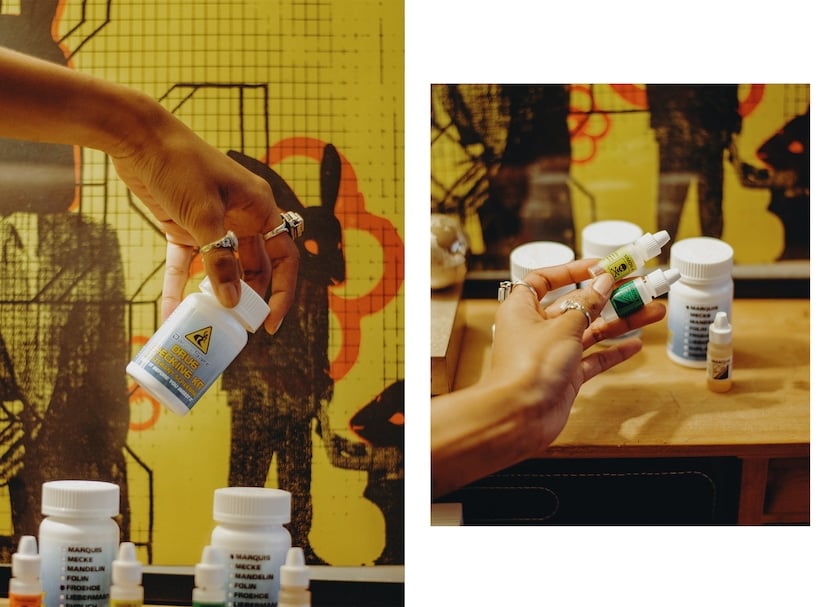
Anytime you procure a drug illicitly, it is impossible to know what you’re getting without testing. Simple drug purity testing kits can be purchased online. These test kits are far from perfect. Yet, they can tell you whether or not your sample contains MDMA and/or other known substances. Testing is always preferred over winging it.
Risks in the Club
Molly can affect your judgment. Multiple studies suggest that MDMA may inhibit a person’s ability to recognize malice, harm, or negative emotions in others. Should this research prove correct, those who take molly at clubs, festivals, and even among therapists should be aware of the potential risks of MDMA in intimate settings. If MDMA does indeed alter a person’s ability to sense malice, it is of the utmost importance to take MDMA in a safe and secure place among trusted people—with clear and established boundaries and expectations. It’s essential to be aware that MDMA may affect a person’s ability to perceive danger.
What is Consent?
To repeat, molly may affect a person’s ability to perceive danger and risk—factors that can influence a person’s ability to give consent. Consent is an agreement between two or more parties to engage in any activity, although it most commonly refers to sexual activity in particular. No matter how loving or open a person appears, they cannot consent if they are incapacitated. A person is incapacitated when they cannot make rational decisions and/or understand the “who, what, when, where, why, and how” of a situation.
Read: Consent is Psychedelic. Here’s Why.
A person must be aware of who they are involved with, what they are doing, what they are willing to do, and what they are being asked to do. A person must understand when the request is taking place and for how long. They must also understand where they are presently and where they are going. They need to be able to recognize, understand, and verbally confirm why they are doing something or being asked to do something. Finally, they must understand how the activities will take place. Here is a brief cheat sheet for recognizing and giving consent:
- Clear: A verbal “yes.”
- Coherent: An incapacitated person cannot give consent.
- Freely Given: A person genuinely wants to consent.
- Willing: Pressured consent is not real consent. Pressured consent is coercion.
- Reversible: When a “yes” turns into a “no,” the “no” needs to be respected.
- Ongoing: Consent is needed for every step of the activity.
Conversations around consent are important in recreational and festival settings. But, these settings are not the only places where having clear conversations about consent is essential. Definitive conversations about expectations and boundaries—especially when it comes to physical touch and expectations of professionalism—are vital before engaging in MDMA-assisted psychotherapy, regardless of whether or not your session is conducted by a guide or licensed therapist. For more information on red flags and vetting a psychedelic guide here.
*The entirety of this article was not reviewed by a medical professional.
The information presented in this article is intended for educational purposes only and should not be used as medical advice or replace medical expertise or treatment.
Interested in having a psychedelic experience, but don't know where to start? Get our definitive guide on trusted legal retreat centers, clinical trials, therapists, and more.
